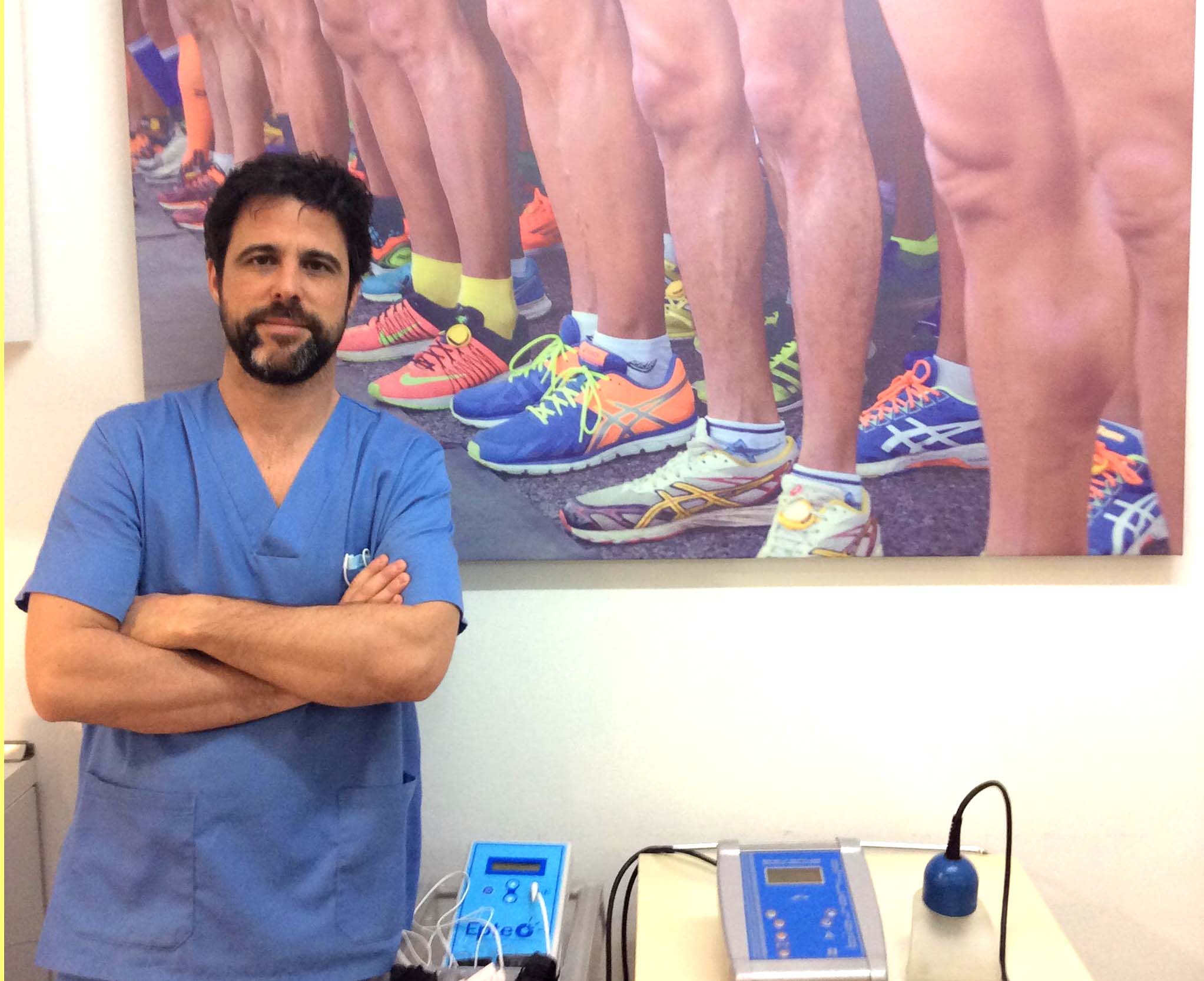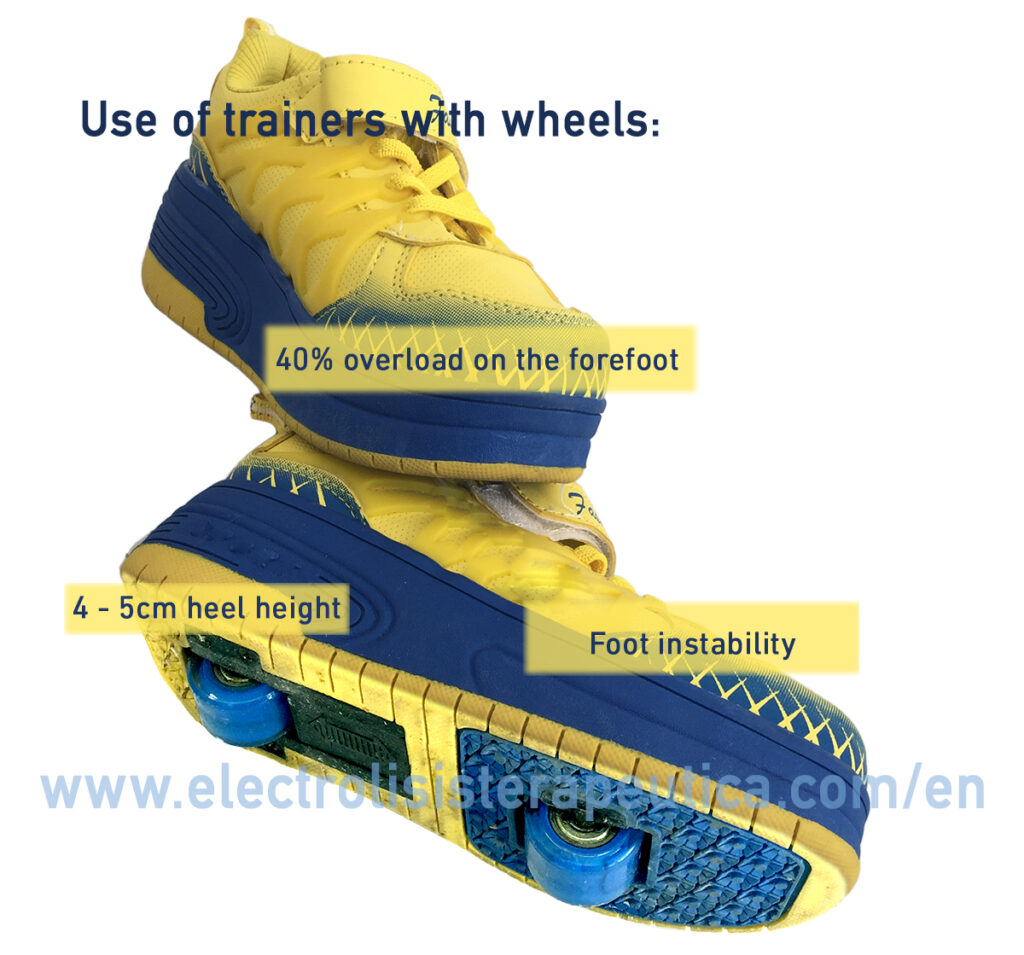Trainers with wheels have quickly become a common footwear among the youngest ones. But its use is not suitable for a child because it causes a malfunction of the foot which growth can generate different podiatric conditions. On the following article we tell you which injuries may be caused and how to prevent them with proper footwear.
Trainers with wheels are used by many children. These types of footwear could be considered more like a toy than a regular shoe for a child to wear all day long. The longer the time in which the child uses the trainers with wheels, the more the risk of injuries increases. This is because they are heavier, have higher heels that a normal shoe, a part for a lack of flexibility and instability because of the wheels.
Alejandro Bayo, chiropodist and osteopathic at Centre d’Estudi of Peu and Professor at the Foot Pathomechanics post-graduate course of the University of Barcelona explains us how and why.

First of all, wearing these shoes with wheels have a similar effect on children as wearing a 4/5 cm heel. “The fact of carrying a wheel under the heel, among other things, causes a continue plantar flexion on the foot; it also increases pressure to more frequent levels that can occur with trainers with wheels. In fact, they are related to “excess of pressure in the forefoot, metatarsalgia and even stress fracture of metatarsal”.
As for the back part of the foot “muscle shortening and Sever’s disease would be the most frequent injuries that may be caused by trainers with wheels“. Another important aspect is the instability of the ankle that this type of footwear provoque, causing ligamentous hiperlaxitudes and subsequent ankle sprains“.
The use of trainers with wheels can leave significant long-term sequelae as an intrinsic foot muscle atrophy and injuries or desease related to excess of pressure in adulthood. The foot is very complex and involves many mechanisms for effective synchronized motion. If we limit the use of certain muscle-tendon structures, the foot which is made to move and walk will not do it correctly.” This way, it can lead to plantar fascitis, flat feet, Freiberg disease or degenerative osteoarthritis of the Midtarsal because of the collapse of the medial arch“.
A few months ago, an investigation done at the University Miguel Hernandez warned on the dangers of wearing trainers with wheels. In this study, conducted by Professor Roberto Pascual, Child specialist podiatry, 11% of children aged between 2 ½ years and eight ½ years who participated came with trainers with wheels. The research reflects that this type of shoe weights more than twice the normal sports shoes and increases the load on the forefoot by 40%. Moreover, the average pressure on the heel is between 1.5 and 2.7 times higher in shoes with wheels. From this study, the College of Podiatry asked schools to ban the use of trainers with wheels.
There already have been cases of children with Sever’s desease that have been asked not to wear trainers with wheels as part of the treatment.
In order to prevent these diseases, Alejandro Bayo gives us some guidelines. First of all, children’s shoes must be of the right size. “To see if the number is correct, we will ask the child to put all of the fingers forward, while the foot is in the shoe and then introduce our index finger between the heel and the back of the shoe. If our finger does not fit, the shoe is too small and it is not recommended for the kids to wear it. “The heel must have an area of stiffener to hold the foot while walking and a comfortable padded part in the area of the Achilles tendon“. The other key aspect is found in the forefoot, “Holding the shoe by the heel with one hand, with the other hand you have to push the tip of the shoe to check that it folds in the region of the metatarsals and not the middle of the shoe.“.
This way, we ensure that the footwear is correct and can avoid injuries in adulthood.
If you liked this post, you may also be interested in: Whatsapp injuries for neck, fingers and wrists.

